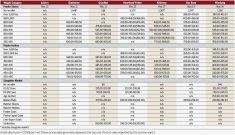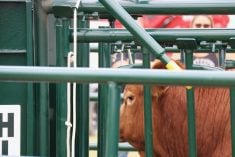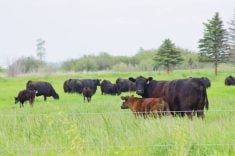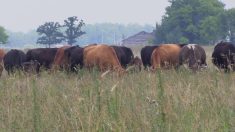It was a tough spring, coming off a tough winter, coming off an even tougher drought year in 2021, but there is finally pay off in the sales ring for cattle producers.
Tyler Fulton, president of the Manitoba Beef Producers, estimates that local calf prices are 30 to 50 cents per pound higher than at this time last year, making it one of the best seasons the industry has seen since 2015.
Read Also

Manitoba Ag Days 2026 coming up fast
Canada’s largest indoor farm show, Manitoba Ag Days, returns to Brandon’s Keystone Centre Jan. 20-22, 2026. Here’s what to expect this year.

“Whether or not it’s really going to help the herd rebuilding component, it’s probably still too early to tell,” he said.
“There’s no doubt that cash flow has been extremely tight in the industry, especially after the drought last year, and really, there’s not a huge appetite to be buying in at current prices when everything is just so fresh.”
Why it matters: Prices have helped sweeten the outlook for cattle producers, but it’s hard to say how that might affect industry retention.
Although slaughter volumes have been lighter than usual, fed cattle prices have been setting new highs for the year, a positive sign for cow-calf producers, says Canfax, the market analysis arm of the Canadian Cattle Association.
“Yearling grassers are about 15 per cent stronger than prices last year. Calves are up about eight per cent,” said Canfax executive director Brenna Grant.
It’s a major change, market analyst Brian Perillat also noted, pointing out that fall weaned steers had been in the same trading range since 2017.
“Right now, most of these calves were well over $2.50 to $2.60,” said Perillat, agribusiness specialist with More than Just Feed in Strathmore, Alta. “We could see a lot more strength in these calves, depending on what the grain market does. We’re 40 to 50 cents higher than we have been for the last few years for calf prices, so that’s pretty positive.”
Prices started rising in July and the upward price trend looks to have legs, he said.
“There’s a lot of strong fundamentals on the cattle side. It’s going to turn into a supply story – finally.”
It has taken a few years to play out.
“The U.S. cattle herd peaked back in 2019, and they’ve kind of been selling off,” said Perillat. “We just continued to fight a backlog of cattle for the last couple of years. With them getting rid of a bunch of cows, and working through these backlogs and drought cattle, it looks pretty promising from a supply point of view. Cattle prices will go up and start going up.”
Perillat also noted the impact of last year’s significant cattle imports from the U.S.
“We were a net importer in 2021 of almost a quarter of a million head of cattle. That kept our feedlots full. We just had big supplies through spring and summer. We’ve worked through some of that.
“(However) the very high feed costs were also motivating feedlots to sell cattle as soon as they could. We worked through some of the glut of cattle somewhat quickly as well. That’s going to help us get to some tighter numbers this year and maybe next year.”

Still bleeding
The interplay of higher prices, reduced herds and farmer fatigue has yet to shake out in Manitoba’s cattle sector.
Those who were forced to reduce herds in 2021 may worry about being forced to “buy high,” after selling animals low last year, Grant said during a webinar hosted by the Beef Cattle Research Council in early September.
Fulton said current prices may encourage those already considering an exit from the industry. Despite margins potentially creeping higher, hay and pasture land are hard pressed to match the opportunity cost of running cattle when compared to grain production, he noted.
“We’re probably still looking at canola and wheat prices that are double what they were five years ago, but we’re obviously not looking at that kind of gains in the cattle market yet,” he said. “If you’ve got land that is flexible in its use, then it’s really still a tough sell in rationalizing it, in putting it down to forage.”
It is too early to predict a premium on bred cattle this fall, Fulton said. The last three months of 2022 will tell that tale.

The window is still open on AgriRecovery aid through Manitoba’s Herd Management Drought Assistance program, centred on rebuilding cattle genetics lost to drought, although producers would have had to register earlier this year. The program, which joined feed and transport assistance programs unveiled in 2021, promised $250 per head for female breeding beef cattle, elk or bison, or $50 a head for sheep or goats replaced between the end of March 2022 and January 2023. That replacement could either be purchased females or heifers retained from the farm’s own herd.
Anecdotal evidence suggests that Manitoba’s cattle sector continues to lose farmers, according to Fulton.
Calves from some of the province’s largest cow-calf producers were lost during freezing conditions this spring in a string of late winter storms. That added insult to injury, given an already smaller anticipated calf harvest thanks to herd reductions in 2021.
“For anybody that really struggled with it and was already on the fence, those are the individuals that likely did pull the plug,” Fulton said.
“Then, the question is, did they have somebody in the next generation or did they have a young entrepreneur that was willing to take on that risk and grow their herd and take over some of that pasture land that would go unused?
“I’m optimistic that that’s where the opportunity lies for some of the young guys that are looking to grow, but I don’t know if we’re going to get as many coming in as we’re going to need in order to maintain the herd as we see the older demographic start to retire.”
Feedlots
Optimism in the cattle industry is almost more important than cash, said Charlie Christie, a rancher, grain farmer and feedlot owner from Trochu, Alta.
“The money is important, but the optimism is so important to keep driving forward,” he said.
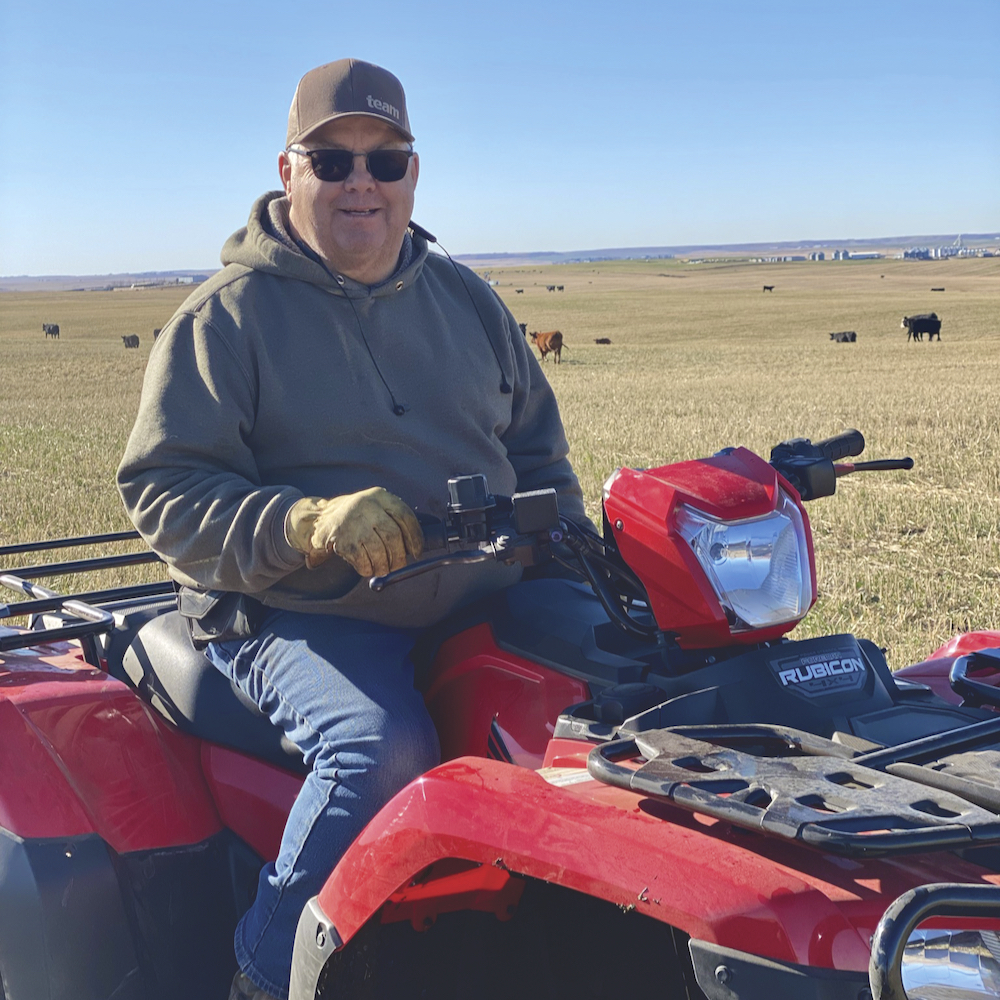
The rise in prices after tough years that included drought and packer processing backlogs during the pandemic, has given some “an opportunity to get out,” he added.
“You could look at that as a positive as well,” said Christie. “There’s an abundance of feed and they’re able to get out at a reasonable price, rather than being forced out at whatever you can get. Even at the darkest place of the whole thing, I can see a positive side of it.”
The cattle herd has shrunk in the past few years, and it’s still shrinking, he noted.
“I think there’s a few good years of prices ahead of us. My daughter and son-in-law are building their cow herd right now, and it’s good to see them get into it where they can build some equity and get in a stronger footing for the next go-round.”
Meanwhile feed costs are finally coming down.
“The really big thing is that we’ve seen barley prices drop 15 per cent since the end of June and that’s already been supporting both the yearling and the calf market, which are stronger than last year,” Grant said last month.
The forage season has also offered some relief, although putting up dry hay has been a challenge in Manitoba, with many first cuts were overly mature or of poor quality due to rain.
In mid-August, the Manitoba Forage and Grassland Association noted uncertainty over hay prices, given variability in quality and unknown harvest numbers on greenfeed and second cuts.
A needed break
Cow-calf producers have had a tough slog, especially with the drought. They need some relief, said Perillat.
“They’ve spent a lot of money to feed the cows over the last year. Prices are good, but it doesn’t mean big profit margins for the cow-calf guys, either. Hopefully, next year, we’ll see even better things going forward for cow-calf producers.”
The outlook is also far brighter for feeders as fat cattle have been fetching close to $1.80 a pound.
“For August, that’s a very strong price,” Perillat said. “That’s the highest we’ve seen since 2015. Feedlot owners paid a fair amount for calves last fall and they’ve had to feed extremely expensive feed.
“For the first half of 2022, feedlots were not doing well and were often losing money, but now we’re getting close to a break-even at least.”
Cow slaughter is up one per cent in the West, and exports to the United States are significantly larger, added Grant.
“We are expecting a smaller cow herd on Jan. 1 in the West,” she said. “In the East, they’ve actually had stronger culling of their cow herd and that includes both beef and dairy cows. They’re going to be also having a smaller cow herd on Jan. 1.”
Add it up and the supply-demand equation should favour producers, she said.
“In terms of the U.S. and Canada, we are going to have a much smaller calf crop coming forward, which means tighter supplies. There is probably going to be competition for those calves, which will support prices.”





